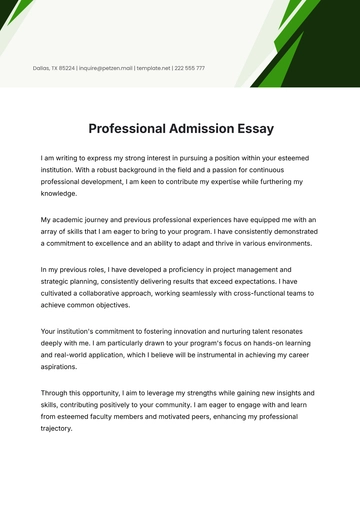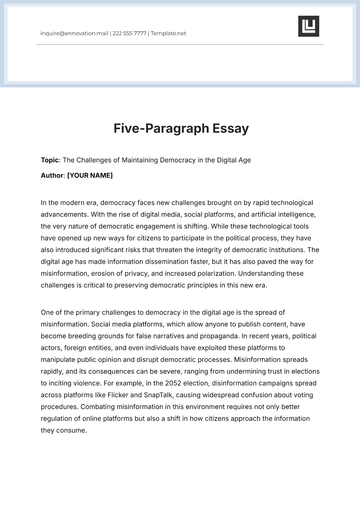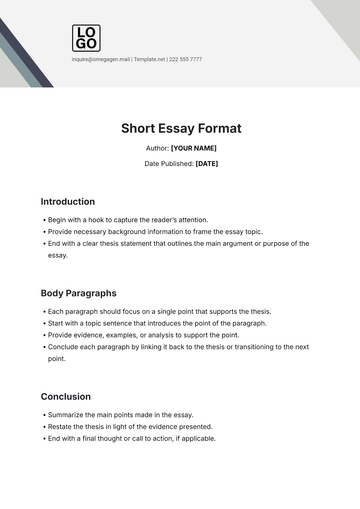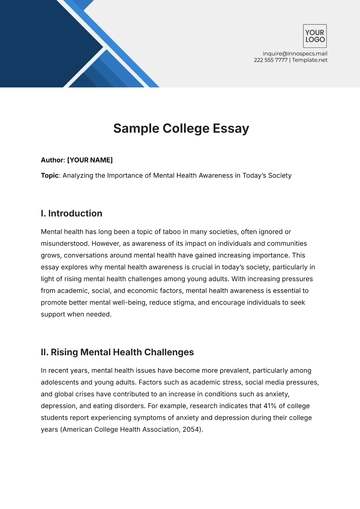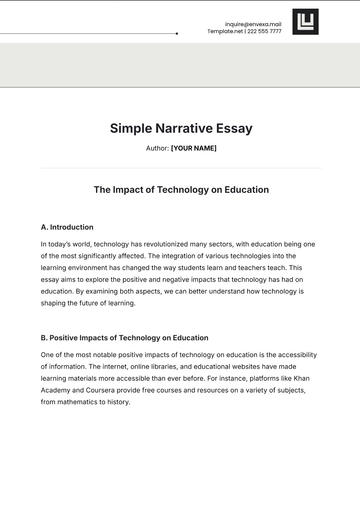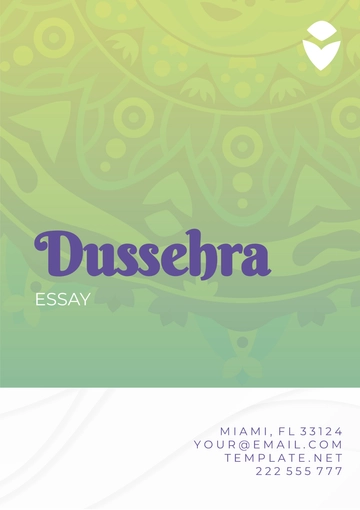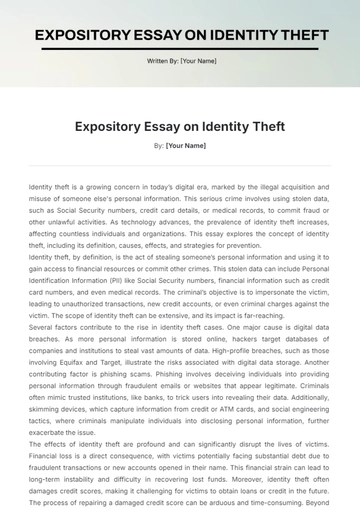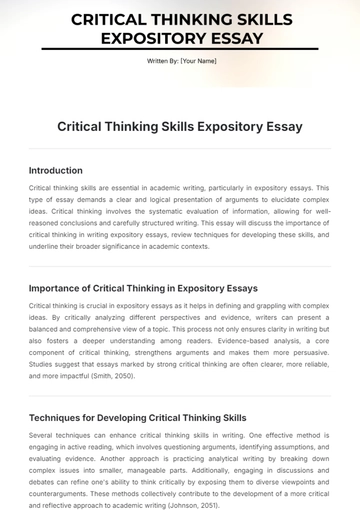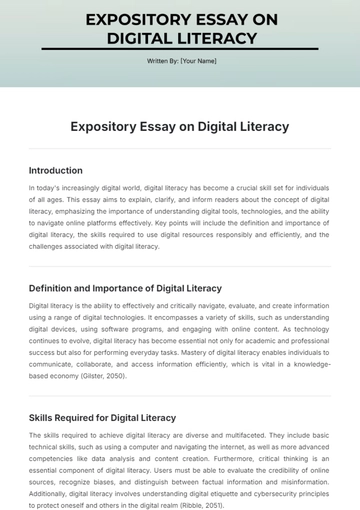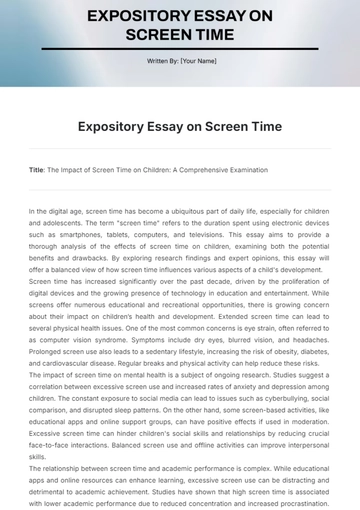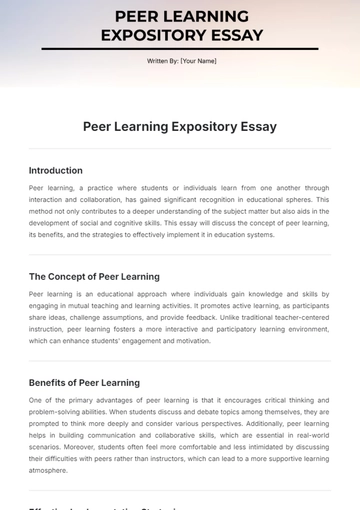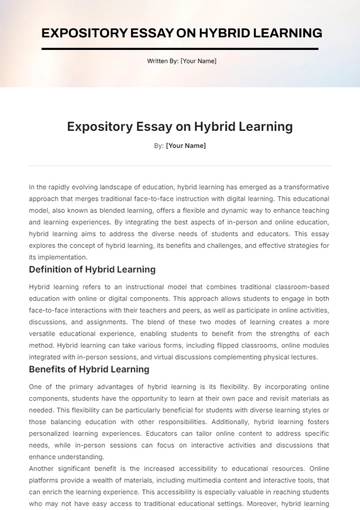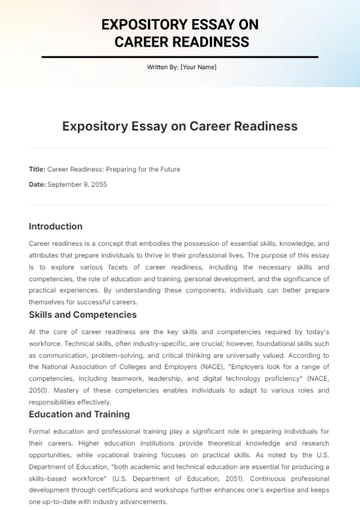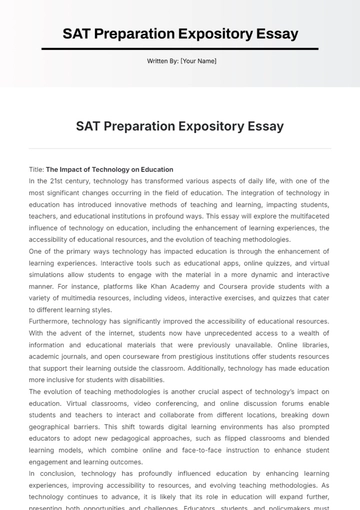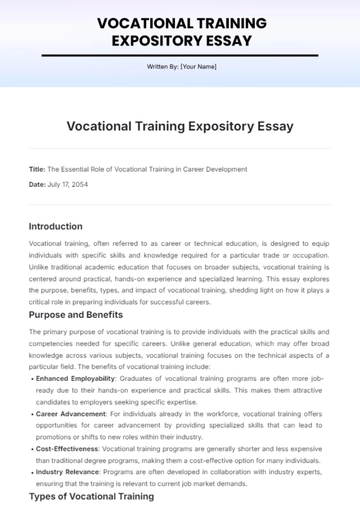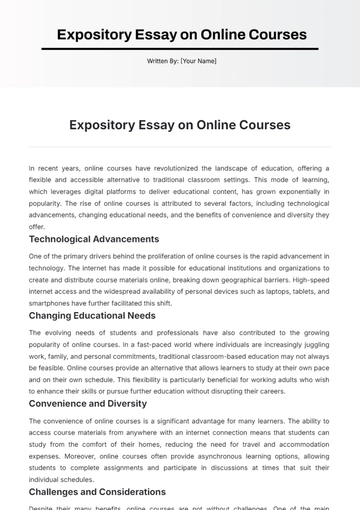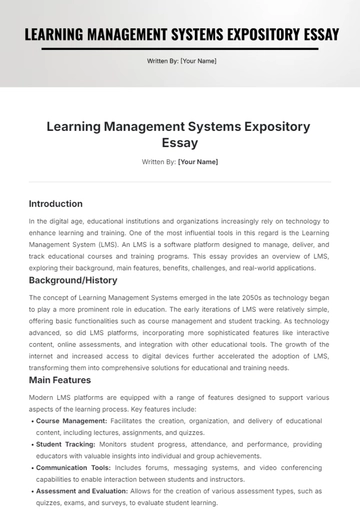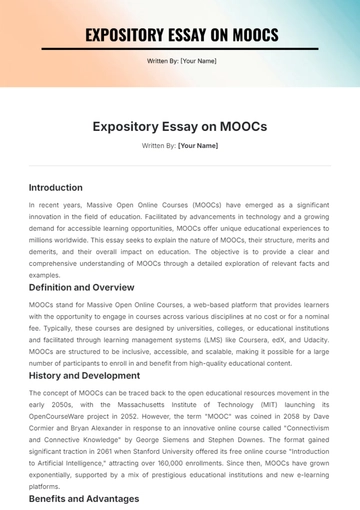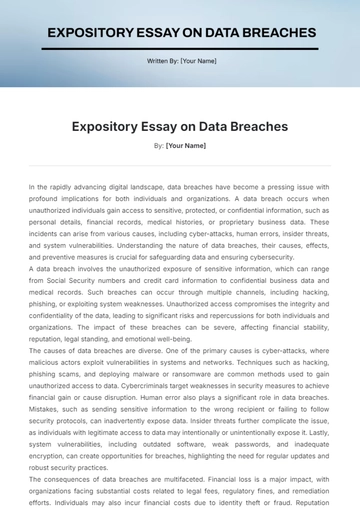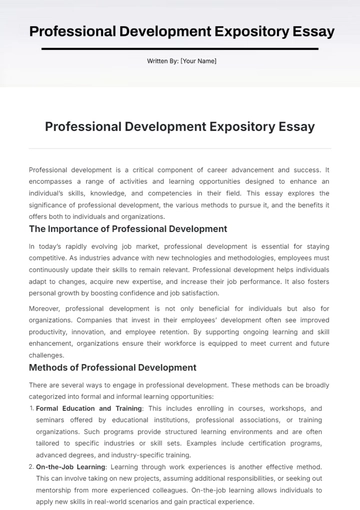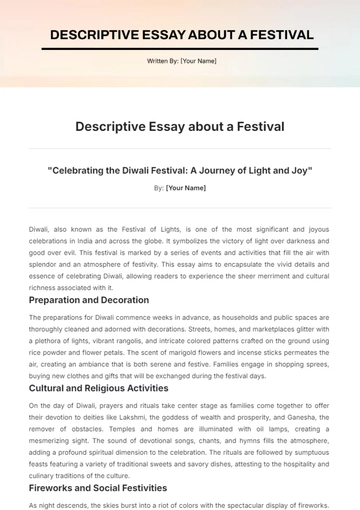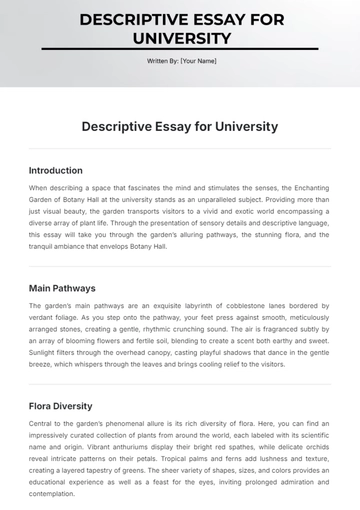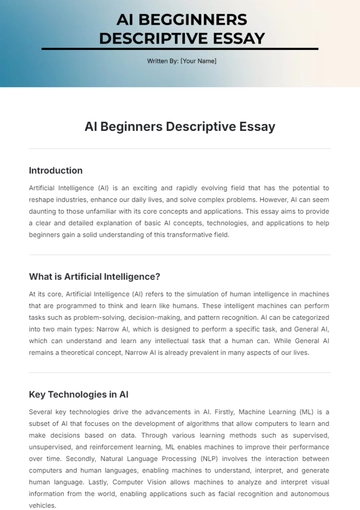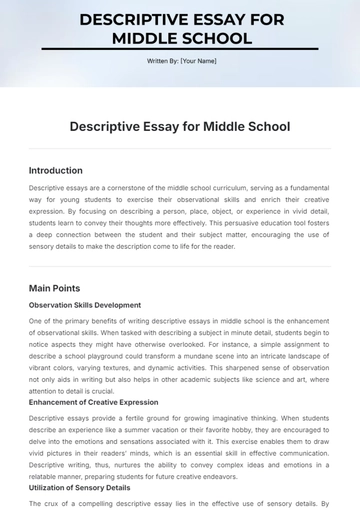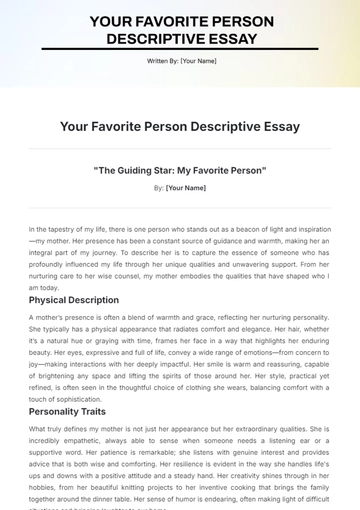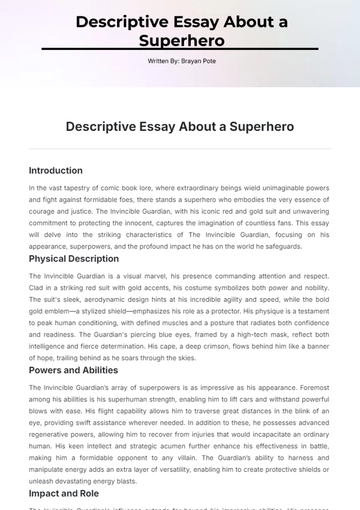Free Short Essay Format
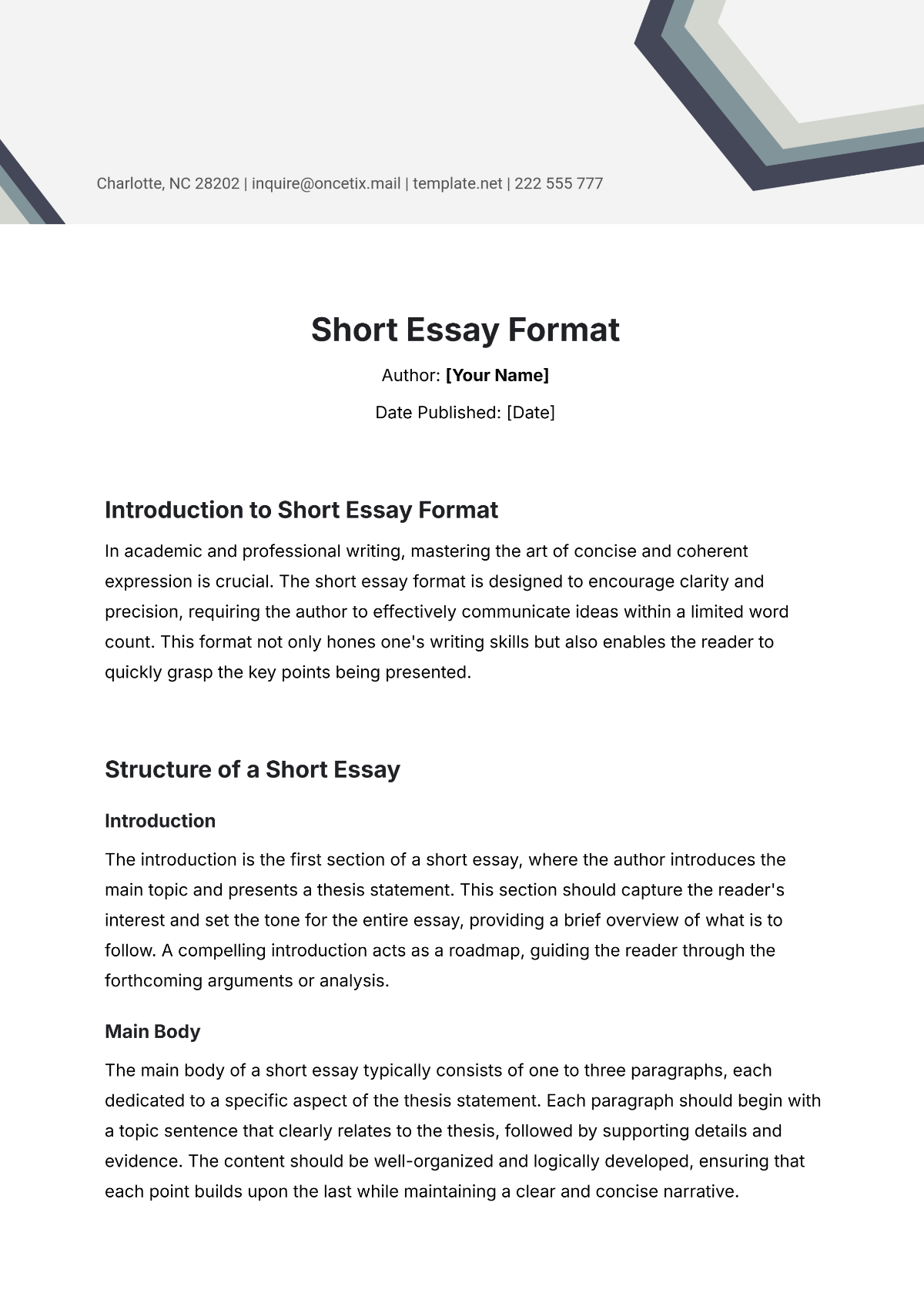
Author: [YOUR NAME]
Date Published: [DATE]
Introduction
Begin with a hook to capture the reader’s attention.
Provide necessary background information to frame the essay topic.
End with a clear thesis statement that outlines the main argument or purpose of the essay.
Body Paragraphs
Each paragraph should focus on a single point that supports the thesis.
Start with a topic sentence that introduces the point of the paragraph.
Provide evidence, examples, or analysis to support the point.
Conclude each paragraph by linking it back to the thesis or transitioning to the next point.
Conclusion
Summarize the main points made in the essay.
Restate the thesis in light of the evidence presented.
End with a final thought or call to action, if applicable.
- 100% Customizable, free editor
- Access 1 Million+ Templates, photo’s & graphics
- Download or share as a template
- Click and replace photos, graphics, text, backgrounds
- Resize, crop, AI write & more
- Access advanced editor
The Short Essay Format Template from Template.net is a versatile and user-friendly tool for students and writers. Fully editable and customizable, it allows you to craft essays quickly and efficiently. With the AI Editable Tool, you can easily modify the template to suit your specific needs, ensuring a polished and professional result every time.
